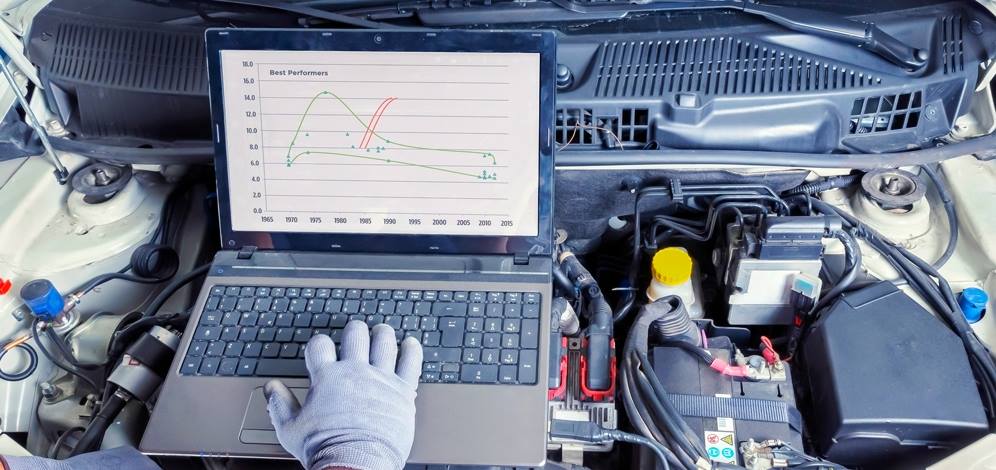Are you experiencing issues with your vehicle’s fuel efficiency or emission levels? The culprit could be a faulty oxygen (O2) sensor. The O2 sensor plays a critical role in monitoring the oxygen levels in your vehicle’s exhaust gases, helping to optimize fuel efficiency and reduce harmful emissions. Testing your O2 sensor using an OBD2 scan tool can provide valuable insights into its performance and enable you to diagnose any problems accurately. In this step-by-step guide, we will walk you through the process of efficiently testing your O2 sensor using an OBD2 scan tool.
Modern vehicles come equipped with onboard diagnostics, known as OBD2 systems, which allow for easy access to crucial information about the vehicle’s performance. By utilizing an OBD2 scan tool, you can tap into this wealth of data and efficiently test your O2 sensor. Testing the O2 sensor is essential to ensure optimal engine performance and fuel economy.
Understanding the O2 Sensor
The O2 sensor, also known as the oxygen sensor, is a key component of your vehicle’s emissions control system. It is located in the exhaust system and measures the oxygen content in the exhaust gases. This information is relayed to the vehicle’s engine control unit (ECU), which adjusts the air-fuel mixture accordingly. By maintaining the correct air-fuel ratio, the O2 sensor helps optimize engine performance and reduce harmful emissions.
Read more: Understanding and Troubleshooting Error Code 0x80080005 in Windows
Signs of a Faulty O2 Sensor
A malfunctioning O2 sensor can lead to a variety of issues in your vehicle. Some common signs of a faulty O2 sensor include:
- Decreased fuel efficiency
- Increased emissions
- Check Engine Light (CEL) illumination
- Rough idling or stalling
- Poor engine performance
If you notice any of these signs, it is advisable to test your O2 sensor using an OBD2 scan tool.
Gathering the Necessary Tools
Before you begin testing your O2 sensor, ensure you have the following tools:
- OBD2 scan tool (compatible with your vehicle)
- Safety goggles and gloves (for protection)
- Vehicle owner’s manual (for reference)
- Pen and paper (to note down any diagnostic trouble codes)
Step 1: Locate the OBD2 Port
The OBD2 port is typically located under the dashboard on the driver’s side. It is a 16-pin connector that allows the scan tool to communicate with the vehicle’s OBD2 system. Refer to your vehicle owner’s manual for the exact location of the OBD2 port.
Step 2: Connect the OBD2 Scan Tool
Take the OBD2 scan tool and connect it to the OBD2 port. Ensure a secure connection is established.
Step 3: Power on the Scan Tool
Turn on the OBD2 scan tool by pressing the power button. Wait for the device to initialize.
Step 4: Access the OBD2 Menu
Navigate through the menu options on the scan tool’s display and locate the OBD2 menu. Different scan tools may have varying menu layouts, so consult the user manual if needed.
Step 5: Select the O2 Sensor Test
Once you have accessed the OBD2 menu, look for the O2 sensor test option. Select it to initiate the testing process.
Step 6: Follow the Prompts
The scan tool will provide prompts on its display to guide you through the testing procedure. Follow the instructions carefully, ensuring you complete each step as directed.
Step 7: Interpret the Results
After the scan tool has finished testing the O2 sensor, it will display the results. Pay close attention to any diagnostic trouble codes (DTCs) generated by the test. These codes can help pinpoint the specific issue with your O2 sensor.
Step 8: Addressing O2 Sensor Issues
If the test reveals a faulty O2 sensor, it is important to address the issue promptly. Depending on the severity of the problem, you may need to replace the sensor or perform other maintenance procedures. Consult a professional mechanic or refer to your vehicle owner’s manual for guidance on resolving O2 sensor issues.
Frequently Asked Questions (FAQs)
- Q: Can I test my O2 sensor without an OBD2 scan tool?
- A: No, an OBD2 scan tool is required to accurately test the O2 sensor.
- Q: How often should I test my O2 sensor?
- A: It is recommended to test your O2 sensor during routine vehicle maintenance or if you experience any signs of a faulty sensor.
- Q: Can I drive my vehicle with a faulty O2 sensor?
- A: While you can drive with a faulty O2 sensor, it is not advisable. A malfunctioning sensor can negatively impact your vehicle’s performance and fuel efficiency.
- Q: Can I clean my O2 sensor instead of replacing it?
- A: Cleaning an O2 sensor is not recommended. If the sensor is faulty, it is best to replace it with a new one.
- Q: How much does it cost to replace an O2 sensor?
- A: The cost of replacing an O2 sensor can vary depending on the make and model of your vehicle. It is best to consult a mechanic or dealership for an accurate estimate.
Conclusion
Efficiently testing your O2 sensor using an OBD2 scan tool is a crucial step in maintaining optimal vehicle performance and reducing emissions. By following the step-by-step guide outlined in this article, you can identify and address any issues with your O2 sensor promptly. Remember to consult your vehicle owner’s manual or seek professional assistance if needed.
